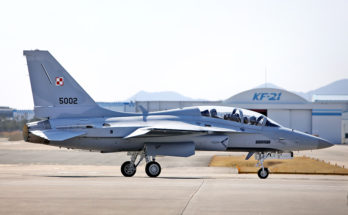by Carter Palmer, Power Systems Specialist, Forecast International.
The end of the Second World War marked the beginning of a new era in aviation. Turbine-powered aircraft were a vast improvement over previous piston-engine designs in a great many respects and could fly higher and faster. The Jet Age was marked by record-breaking aircraft doing the seemingly impossible. The jet engine had arrived, and its basic form, the turbojet, would power some of the most iconic aircraft of the time.
A turbojet is a simple turbine engine whereby all of the air ingested is combusted for thrust. Turbofans, the current norm for both civil and military aircraft, use an enclosed fan in conjunction with the turbine to produce thrust. The former is simple but is rather inefficient at lower speeds, whereas the turbofan is more efficient at subsonic through low Mach numbers and has the added benefit of being quieter, an important plus for civilian aircraft.
Today, the turbojet is seen as a thing of the past. It is an antiquated design not even utilized in military aviation outside of a few older designs still in service. Does this form of propulsion still have a place in the aviation world?
The simple answer is yes, but one might need to think small. Missiles, aerial targets and drones are the primary designs that still employ turbojet powerplants. Turbojets offer a high power-to-weight ratio, making them ideal for these small air vehicles. Their simplistic nature also makes the turbojet more reliable. Despite its positives, the turbojet is no longer the main propulsion for piloted aircraft; however, surprisingly, it has application on some well-known designs.
Teledyne J402 turbines power the Navy’s venerable Harpoon anti-ship missile and the Air Force’s JASSM cruise missile. Pratt & Whitney’s TJ-150, an upgraded version of the TJ-50, is used in the Miniature Air-Launched Decoy, or MALD. The block 3 version of the Exocet is propelled by a TR 40 turbojet manufactured by Microturbo of Safran. Despite their wide range of uses, the market for these engines is narrow and is dominated by the aforementioned manufacturers.
Over the next 10 years, Teledyne, Pratt & Whitney AeroPower, and Safran’s Microturbo and Turbomeca are forecast to have about 90 percent of the market, with Teledyne leading. Other manufacturers exist as well, both foreign and domestic, which make up the remaining 10 percent. China Aviation Gas Turbine Co, India’s Hindustan Aeronautics, and Taiwan’s Nationalist Chinese Arsenals are a few of the other players producing turbojet engines. In some cases, the demand for these engines is significant. Although anti-ship missiles are rarely used, target drones are often destroyed and replaced in sizable numbers.
Aviation has indeed come a long way since the early days of jets; however, these early designs still have a home. The turbojet will soldier on, albeit on a much smaller scale.
Please feel free to use this content with Forecast International and analyst attributions, along with a link to the article. Contact Ray Peterson at +1 (203) 426-0800 or via email at ray.peterson@forecast1.com for additional analysis.
Forecast International produces two distinct Power Systems products. The Aviation Gas Turbine Forecast presents the 10-year outlook for aviation turbofan, turboprop and turboshaft engines and more. The Industrial & Marine Turbine Forecast covers the markets for gas and steam turbines, mechanical drive engines, and marine power, among others.
For 50 years, Forecast International intelligence reports have been the aerospace and defense industry standard for accurate research, analysis, and projections. Our experienced analysts compile, evaluate, and present accurate data for decision makers. FI's market research reports offer concise analysis of individual programs and identify market opportunities. Each report includes a program overview, detailed statistics, recent developments and a competitive analysis, culminating in production forecasts spanning 10 or 15 years. Let our market intelligence reports be a key part of reducing uncertainties and mastering your specific market and its growth potential. Find out more at www.forecastinternational.com




